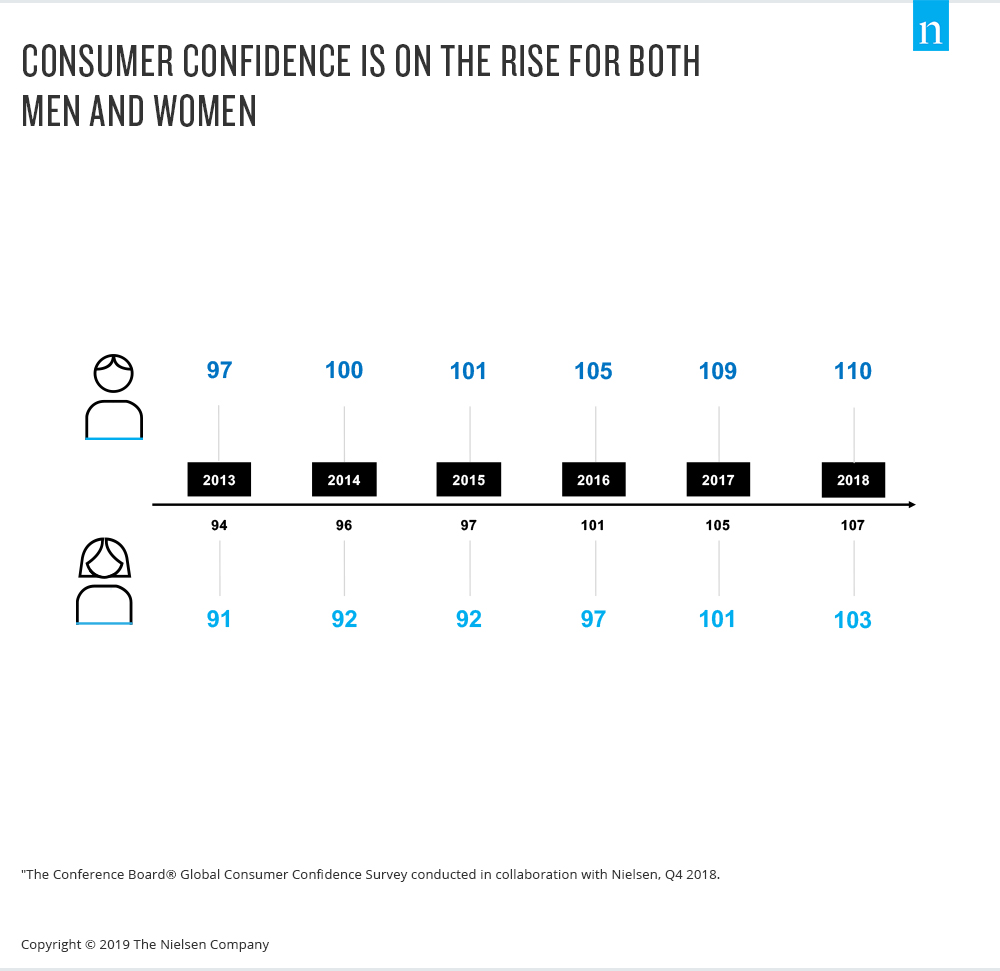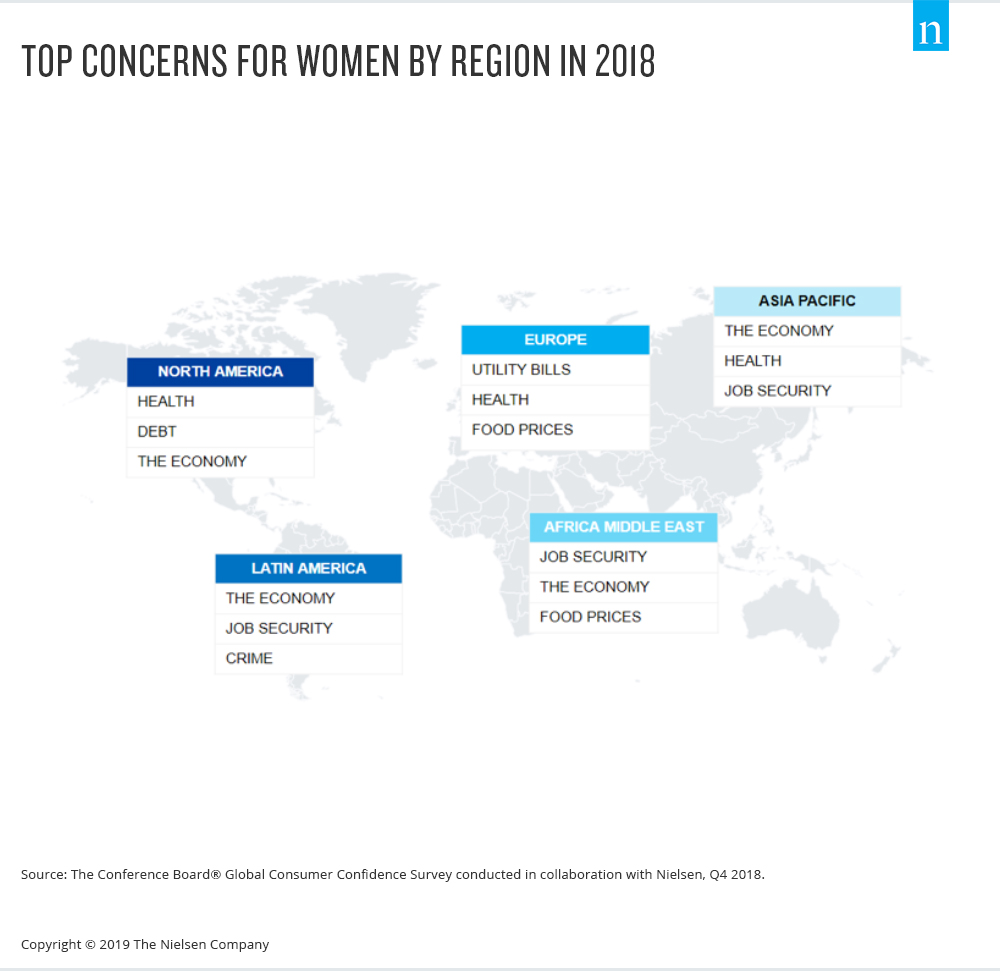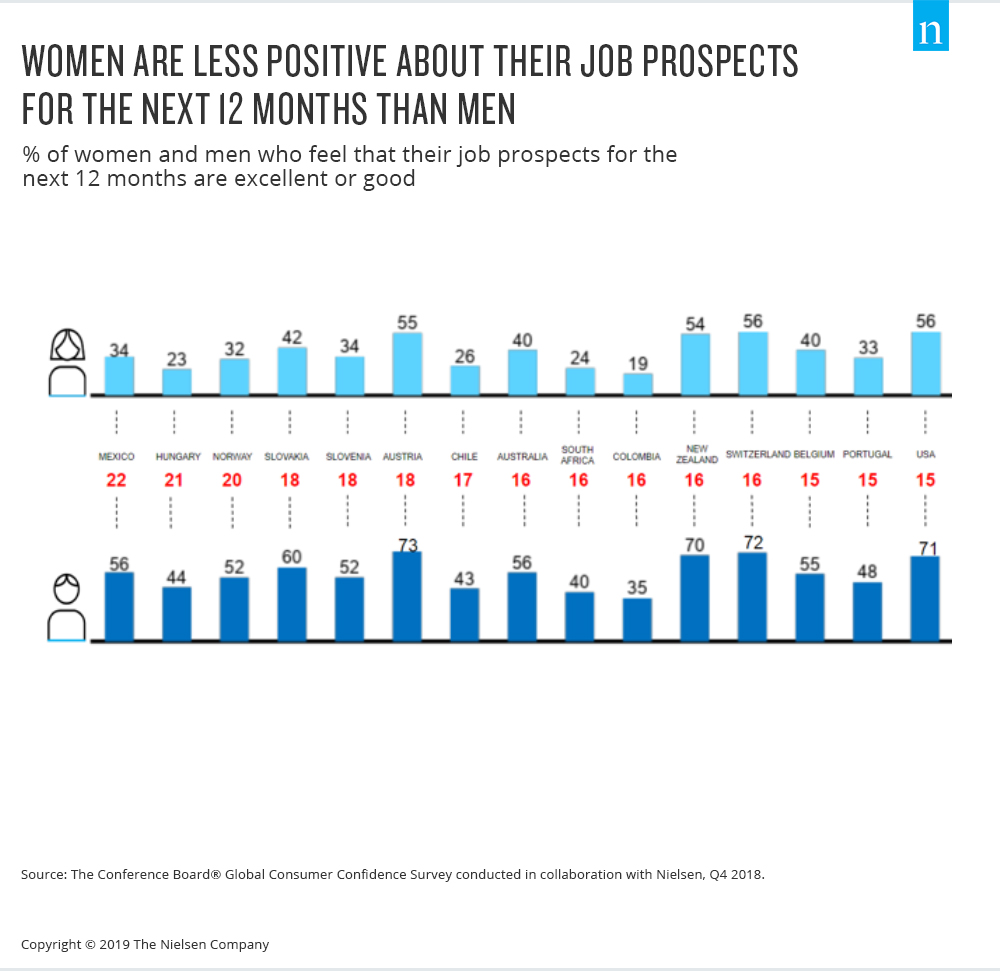The theme for this year’s International Women’s Day on March 8 is #BalanceforBetter underpinned by the idea that balance drives a better working world. For years, we have heard that gender inequality must be addressed in order for economies and businesses to prosper. In fact, the United Nations includes gender equality as one of the Sustainable Development Goals—the foundations for a peaceful, prosperous and sustainable world. However, the United Nations 2018 Global Gender Gap Index indicates that around the world there is still a 32% gender gap that needs to be closed across four dimensions—1) Economic Participation and Opportunity, 2) Educational Attainment, 3) Health and Survival and 4) Political Empowerment.
This is still a sizable gap and is virtually unchanged from last year, but are women’s attitudes changing? In a new gender-focused study, we looked at consumer confidence, economic sentiment and spending intentions by gender over the past five years to understand how the needs and wants of female consumers have evolved.
Consumer confidence is on the rise for women, but men are still more optimistic
Women have become much more optimistic over the years. As of the fourth-quarter of 2018, men had a higher consumer confidence score at 110 globally relative to that of women at 103. However, women’s confidence level has increased faster than men’s over the last five years. This may be the result of increased access to education, jobs and health care, as well as key milestones in closing the gender gap that have been achieved by many countries around the world.

Work-life Balance and job security are still top concerns for men and women
Women continue to be concerned about career-related issues. Work-life balance and job security are some of the top five concerns for both women and men. With more women being in the workforce, employers can do more to create work environments that help both men and women strike a better balance between their personal and professional lives.

Diving deeper into consumer concerns at the regional level found that women’s top concerns are less about survival (e.g., food prices, domestic affairs or utility bills), but more societal and economic. Health is in the top three concerns for the most developed regions, symptomatic of women expecting to live longer and enjoying more affluent lifestyles.

The future is hopeful for women around the world, but gender imbalance still persists
Things are looking up for women at work. Globally, more women feel that their job prospects for the next 12 months are excellent or good, relative to five years ago. This also holds true at a regional level, excepting Latin America, which is likely due to political instability in some countries.
!function(e,t,s,i){var n=”InfogramEmbeds”,o=e.getElementsByTagName(“script”),d=o[0],r=/^http:/.test(e.location)?”http:”:”https:”;if(/^/{2}/.test(i)&&(i=r+i),window[n]&&window[n].initialized)window[n].process&&window[n].process();else if(!e.getElementById(s)){var a=e.createElement(“script”);a.async=1,a.id=s,a.src=i,d.parentNode.insertBefore(a,d)}}(document,0,”infogram-async”,”//e.infogram.com/js/dist/embed-loader-min.js”);
Comparing men versus women, we see that there is a sizable gap between men and women’s confidence in their job prospects.

What may be causing this imbalance? The glass ceiling may be to blame. A 2018 study by Catalyst of women in the workforce shows that globally, women hold less than a quarter (24%) of senior roles in 2018, down from 25% in 2017. And the same study found that 25% of global businesses have no women in senior management roles. The reality is that women have a limited number of role models to aspire to.
But there is still reason for hope. Our study found that women’s savings rate has increased from 30% to 50% over the last five years. And 44% of women say that now is the right time to buy the things they want and need. Both of these affirm women’s increasing buying power and potential impact on the economy.
There is something to celebrate this International Women’s Day. A look back at our Consumer Confidence Survey shows women’s increasing confidence and influence. Gender balance is critical for successful businesses and economies, and the call to drive gender parity this year reminds us that we all have a role in making that balance a reality. Let’s work together to achieve #BalanceForBetter.




